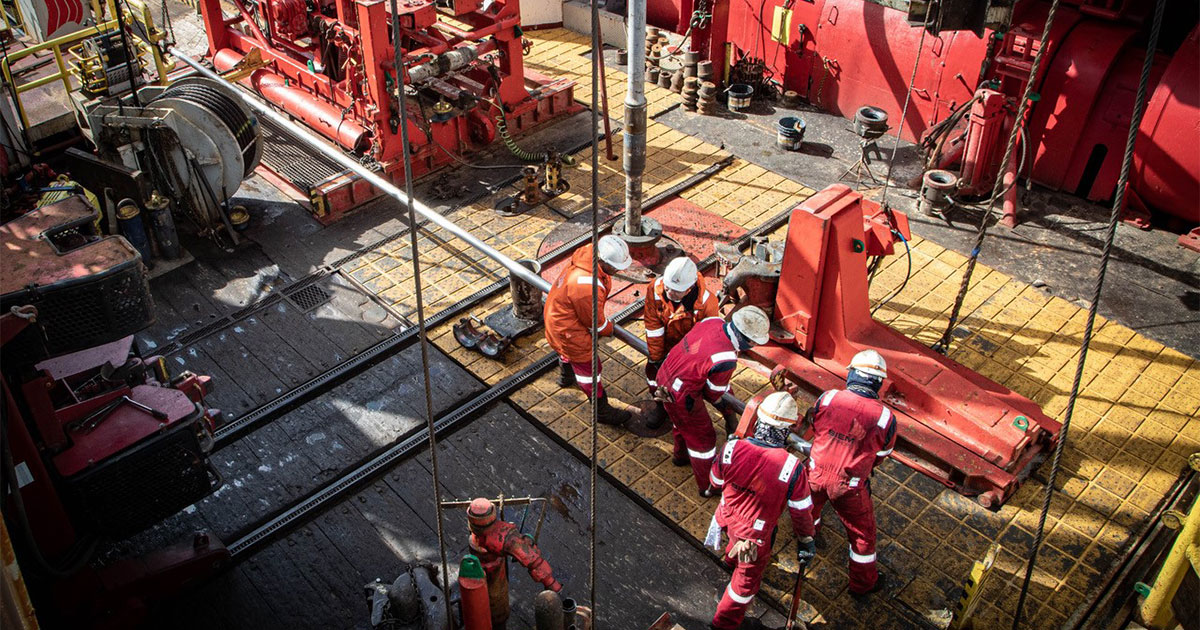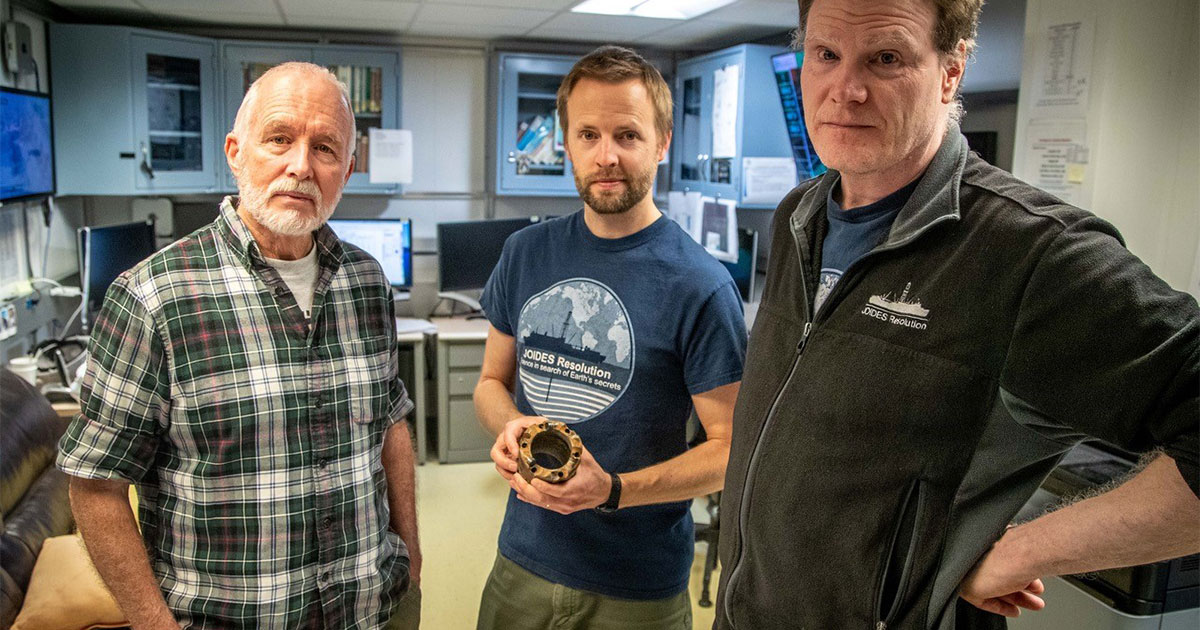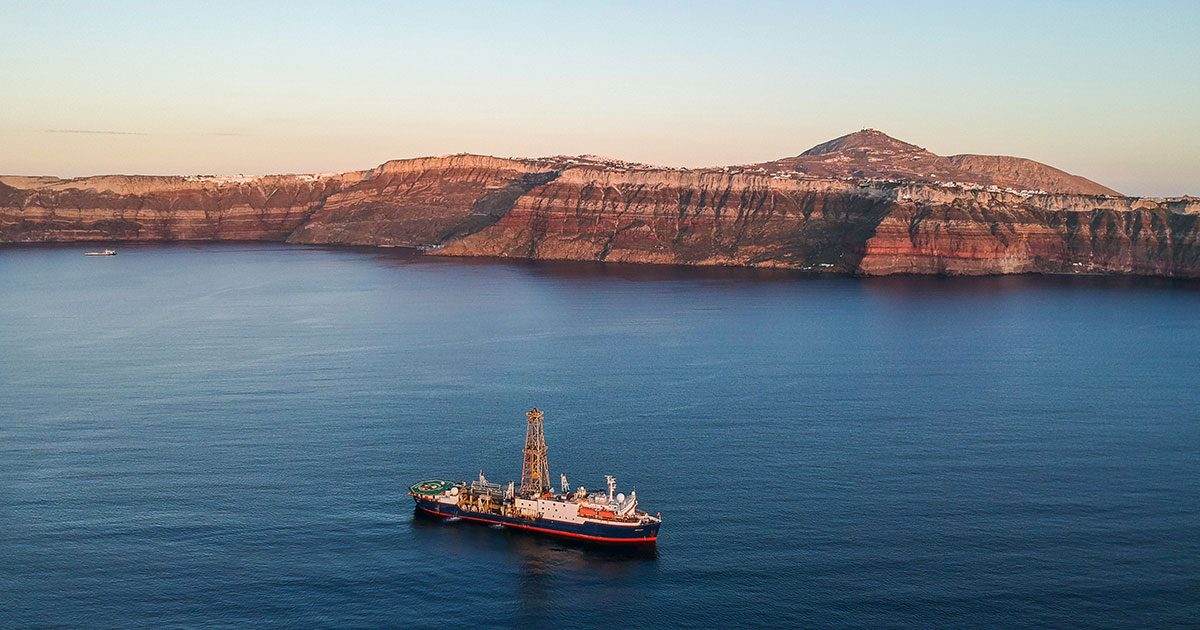An international expedition of the International Ocean Discovery Program (IODP) with the drilling vessel JOIDES Resolution, co-led by Dr. Steffen Kutterolf from the GEOMAR Helmholtz Centre for Ocean Research Kiel, has found evidence of one of the largest eruptions ever recorded in the southern Aegean Arc.
The researchers discovered a previously unknown thick pumice deposit around the island of Santorini. Their results reveal an earlier, significantly more explosive activity of the Christiana Santorini Columbo volcanic field than previously thought. The paper is published in the journal Communications Earth & Environment.
The Greek archipelago of Santorini consists of the remains of a powerful volcano. Members of the international IODP expedition "Hellenic Arc Volcanic Field" have now found evidence of one of the largest eruptions ever recorded in the southern Aegean Arc. In their paper published in the journal Communications Earth & Environment, they describe a newly discovered giant pumice deposit sampled from the seafloor at seven coastal sites around the island of Santorini. It shows that the Christiana-Santorini-Kolumbo volcanic field was much more explosive in the distant past than previously thought.
 View of the JOIDES RESOLUTION rig floor with the drill pipe in the center and the crew, who have just brought another 9.5-meter section of seabed up on board before the next 9.5 meters can be drilled. Step by step, up to 900 meters of seabed can be reached. (Image credit: Erick Bravo, IODP)
View of the JOIDES RESOLUTION rig floor with the drill pipe in the center and the crew, who have just brought another 9.5-meter section of seabed up on board before the next 9.5 meters can be drilled. Step by step, up to 900 meters of seabed can be reached. (Image credit: Erick Bravo, IODP)
The volcanic field in the Greek Aegean consists of a 60-kilometer chain of more than 20 volcanoes, most of which are underwater. It is considered particularly dangerous because the volcanoes there have a history of eruptions, some of which have been highly explosive. "For example, the Late Bronze Age eruption of Santorini around 3,600 years ago probably triggered the downfall of the Minoan civilization on Crete—an important event for both volcanology and archaeology," says Dr. Steffen Kutterolf, a volcanologist at the GEOMAR Helmholtz Centre for Ocean Research in Kiel. Together with Dr. Timothy Druitt from the University of Clermont-Auvergne, he led the expedition to Santorini. The international team of scientists discovered a new deposit around the island, indicating a much larger submarine eruption around 520,000 years ago.
Dr. Kutterolf: "The newly discovered tuff deposit has a volume of more than 90 cubic kilometers and is up to 150 meters thick. This makes it six times larger than the pyroclastic flow deposits of the Minoan eruption and ten times larger than those of the Hunga Tonga-Hunga Ha'apai volcanic eruption of 22 January 2022." Pyroclastic flows are streams of hot ash, rock and gas that, in the case of the newly mapped Santorini event, originated from a submarine volcano at the time and were transformed with the water into turbid flows and mud. These flows transported large quantities of volcanic material up to 70 kilometers into the surrounding sea basins. Layers of rock from this eruption have also been found on three neighboring islands.
Various methods were used to decipher the eruption. Dr. Kutterolf: "The first dating and estimation of the water depth at which the eruption took place was possible directly on board thanks to micropaleontology.” Microfossils (foraminifera), whose geological age and preferred water depths are known, were found directly above and below the pumice deposits. Physical parameters such as density and porosity were also determined on board. The chemical composition of the drilled samples was then analyzed using GEOMAR's electron microprobe, a special scanning electron microscope. "The sample is bombarded with an electron beam with a diameter of 0.01 millimeters. This provides information on how many chemical elements, such as silicon, iron or magnesium, are contained in the quenched magma." This allowed the deposits to be precisely linked to their locations on the seafloor, which in turn helped to determine their spread and thickness, and ultimately the size of the eruption, using seismic images of the seafloor.
 The two co-chiefs Tim Druitt (University of Clermont-Auvergne) and Steffen Kutterolf (GEOMAR) together with the expedition manager Thomas Ronge (IODP) looking at a destroyed drill bit that did not withstand the extreme drilling conditions. (Image credit: Erick Bravo, IODP)
The two co-chiefs Tim Druitt (University of Clermont-Auvergne) and Steffen Kutterolf (GEOMAR) together with the expedition manager Thomas Ronge (IODP) looking at a destroyed drill bit that did not withstand the extreme drilling conditions. (Image credit: Erick Bravo, IODP)
Despite this explosive history, the researchers agree that it is very unlikely that the volcanic field will experience another eruption of this magnitude in the near future. "But knowing the past is also an essential building block for predicting the future," says Dr. Kutterolf.
About IODP:
The expedition was conducted by the JOIDES Resolution Science Operator (JRSO) as part of the IODP (International Ocean Discovery Program). The IODP is a multidecadal, international research program supported by 22 nations, with the goal of exploring Earth's history and structure recorded in seafloor sediments and rocks and monitoring sub-seafloor environments. Expedition 398 Hellenic Arc Volcanic Field sailed from December 2022 to February 2023 with 32 scientists from 9 countries, with expertise in a range of geoscience disciplines.
Original publication:
Druitt, T., Kutterolf, S., Ronge, T. A. et al. (2024) Giant offshore pumice deposit records a shallow submarine explosive eruption of ancestral Santorini. Nature Communications Earth & Environment. https://doi.org/10.1038/s43247-023-01171-z



